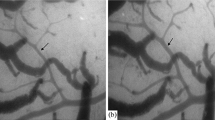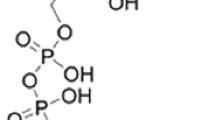Abstract.
The vasodilator action of KRN2391 (10 nM–10 µM), a combined ATP-sensitive potassium channel (KATP) opener and organic nitrate, was investigated in human pial and omental arteries. Previous animal studies have suggested that opening of KATP and activation of guanylate cyclase may contribute to varying extents to the vasodilator action of KRN2391, depending on the origin and size of the vascular preparation. Vasodilator responses were studied in isolated vascular segments (diameter 0.4–0.8 mm) pre-contracted with endothelin-1 in the presence or absence of glibenclamide (inhibitor of KATP), LY83583 (inhibitor of guanylate cyclase), zaprinast (inhibitor of cyclic GMP phosphodiesterase V) and N G-nitro-l-arginine (inhibitor of nitric oxide synthase). KRN2391 induced concentration-dependent vasodilator responses of similar potency in arteries from the two vascular regions. While glibenclamide (1 µM) had no effect in omental arteries, this compound produced a tenfold rightwards shift of the concentration-response curve for KRN2391 in pial arteries without affecting the maximal response (E max). LY83583 (10 µM), zaprinast (10 µM) and N G-nitro-l-arginine (0.1 mM) all failed to affect the vasodilator responses to KRN2391 significantly in either artery. However, in ring segments of rat aorta LY83583 displaced the concentration-response curve for the nitric oxide donor 3-morpholino-sydnonimin (10 nM–0.1 mM) to the right, while zaprinast produced a leftwards shift. The prototype KATP opener levcromakalim (0.01–10 µM) elicited a larger relaxation in pial (E max 80±6%) than in omental (E max 47±13%) arteries, whereas 3-morpholino-sydnonimin produced a smaller relaxation in pial (E max 50±18%) than in omental (E max 90±4%) arteries. These results suggest that the vasodilator response to KRN2391 is mediated by KATP in human cerebral arteries, but dependent on neither KATP nor guanylate cyclase in human omental arteries. The results with levcromakalim and 3-morpholino-sydnonimin indicate that opening of KATP may be a more effective mechanism of vasodilatation in pial than in omental arteries from man, whereas the reverse appears to be true for guanylate cyclase activation.
Similar content being viewed by others
Author information
Authors and Affiliations
Additional information
Electronic Publication
Rights and permissions
About this article
Cite this article
Petersson, J., Ryman, T. & Högestätt, E. Vasodilator effects of KRN2391, levcromakalim and 3-morpholino-sydnonimin in human pial and omental arteries. Naunyn-Schmied Arch Pharmacol 362, 68–73 (2000). https://doi.org/10.1007/s002100000270
Received:
Accepted:
Issue Date:
DOI: https://doi.org/10.1007/s002100000270




